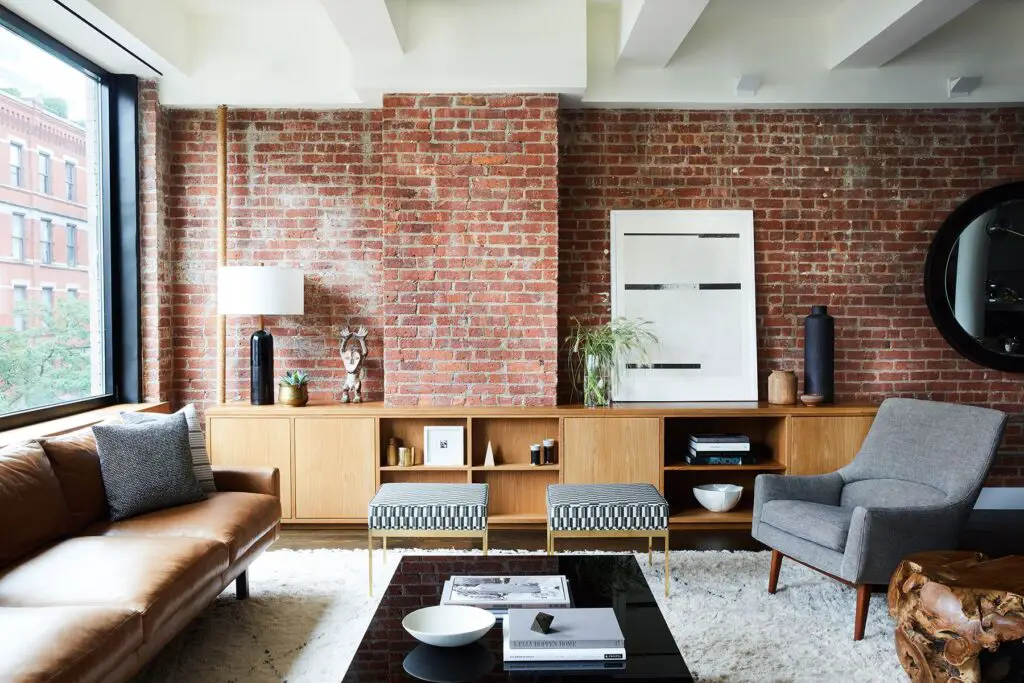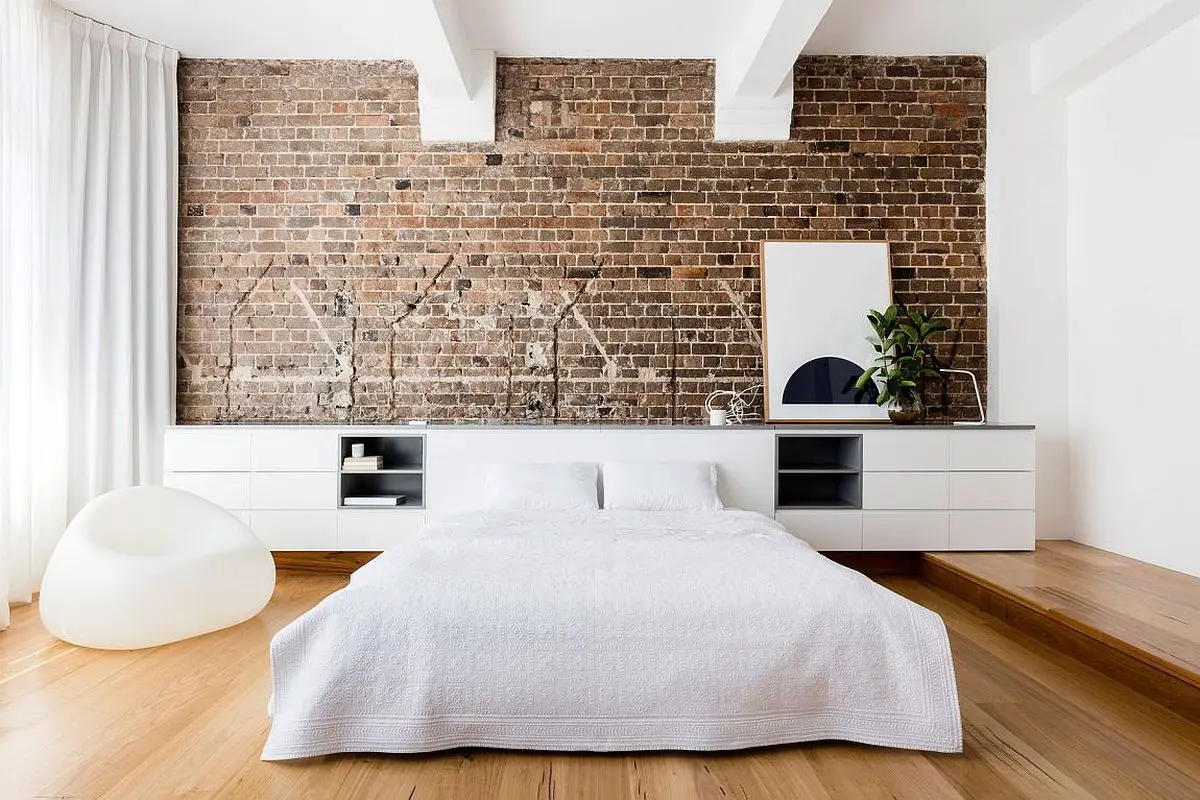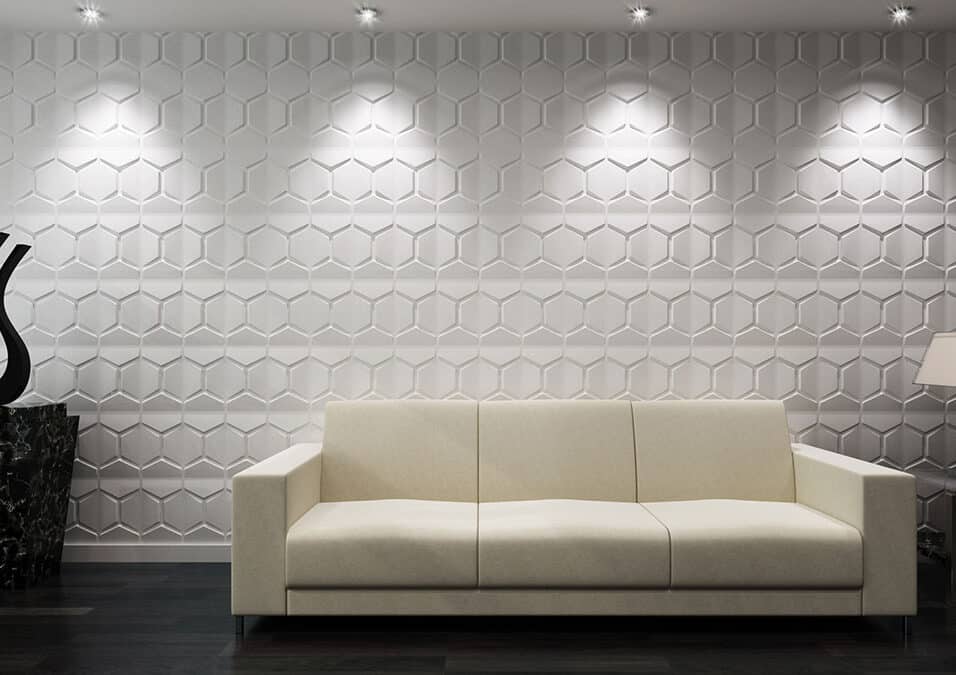How To Seal Interior Brick Wall
Introduction
How To Seal Interior Brick Wall: Sealing an interior brick wall can be a great way to enhance the appearance and durability of your space. Whether you have a brick wall in your home or office, sealing it can help protect it from moisture, stains, and damage, while also giving it a polished and finished look. In this article, we will discuss the steps and materials needed to effectively seal an interior brick wall.
Firstly, it is important to understand why sealing an interior wall brick wall is necessary. Brick is a porous material, which means it can absorb moisture and stains easily. This can lead to issues such as mold growth, water damage, and discoloration over time. By sealing the brick, you create a barrier that prevents moisture from seeping into the material, thus protecting it from these potential problems.
Second, prepare the brick wall before sealing. This involves carefully cleaning the surface to remove dust, filth, and debris. Use a stiff brush or pressure washer to clean the brick and remove loose particles. Before sealing, fix brick cracks and gaps with filler or mortar. After cleaning and preparing the brick wall, seal it. The market offers penetrating and film-forming sealers. Penetrating sealers penetrate the brick to provide a protective barrier, whereas film-forming sealers coat the brick. The sealer you choose depends on your preferences and goals. Read the manufacturer’s directions and choose an inside brick wall sealer.

How do you seal interior walls?
Different Methods of Interior Wall Waterproofing
Paint and Sealants. One of the most affordable and easy methods to interior walls is to use paint and sealants.
Waterproof Membranes.
Drainage Boards.
Cementitious Coating.
Sealing interior walls is an important step in maintaining the overall condition and appearance of your home. One common method for sealing interior walls is through the use of paint or primer. This involves applying a layer of paint or primer to the walls, which helps to create a barrier against moisture and other potential sources of damage. It is important to choose a paint or primer that is specifically designed for interior walls and provides a high level of protection. Additionally, it is recommended to apply multiple coats of paint or primer to ensure thorough coverage and maximum effectiveness.
Another option for sealing interior walls is the use of sealant or caulk. This method is particularly useful for sealing gaps or cracks in the walls, as well as around windows, doors, and other openings. Sealant or caulk can be applied using a caulk gun or a squeeze tube, and it is important to choose a product that is compatible with the material of your walls. It is also important to properly prepare the surface before applying the sealant or caulk, by cleaning and removing any loose debris or old caulk.
In addition to paint, primer, and sealant, there are also specialized products available for sealing interior walls. These products are typically designed to provide a more comprehensive and long-lasting seal, and may include features such as mold and mildew resistance, fire resistance, and soundproofing capabilities. It is important to carefully read and follow the instructions provided with these products, as they may require specific application techniques or additional preparation steps.
How do you seal and paint interior bricks?
- Step 1: Prep the Brick Surface. You’ll need to make sure sure the brick surface is totally clean of loose debris or greasy stains before you start priming. …
- Step 2: Paint on Primer. No matter whether the brick you’re painting is old or new, interior or exterior, you absolutely must use a primer. …
- Step 3: Paint Your Brick.
Sealing and painting interior bricks can be a great way to update the look of a room and add a touch of modernity to your space. Whether you have exposed brick walls or a brick fireplace, sealing and painting can help protect the bricks from damage and give them a fresh, new look. In this article, we will discuss the steps involved in sealing and painting interior bricks.
Step 1: Clean the bricks
The first step in sealing and painting interior bricks is to clean them thoroughly. Use a stiff brush or a wire brush to remove any loose dirt, dust, or debris from the surface of the bricks. You can also use a vacuum cleaner with a brush attachment to remove any loose particles.
Step 2: Repair any damage
Inspect the bricks for any cracks or damage. If you find any, use a brick repair mortar to fill in the cracks and smooth out the surface. Allow the mortar to dry completely before moving on to the next step.
Step 3: Apply a brick sealer
Before painting the bricks, it is important to apply a brick sealer to protect them from moisture and stains. Choose a sealer that is specifically designed for interior bricks. Apply the sealer using a brush or a roller, making sure to cover the entire surface of the bricks. Allow the sealer to dry completely before proceeding.
Step 4: Paint the bricks
Once the sealer has dried, you can proceed to paint the bricks. Choose a paint color that complements the overall color scheme of the room. Use a paintbrush or a roller to apply the paint, making sure to cover the entire surface of the bricks. Apply multiple coats if necessary, allowing each coat to dry completely before applying the next one.
What can I cover an interior brick wall with?
Old, crumbling or discolored brick can cause dust problems, clash with your paint and furniture, and be generally unappealing. You can cover up unattractive brick with drywall, or wood panels. Alternatively, a careful application of plaster can cover and refinish the wall.
When it comes to covering an interior brick wall, there are several options available that can transform the look and feel of the space. Whether you want to add a touch of elegance or create a rustic ambiance, the choice of material can make a significant difference. Here are some popular options to consider:
Paint: One of the simplest and most cost-effective ways to cover an interior brick wall is by painting it. This allows you to completely change the color and appearance of the wall to match your desired aesthetic. You can choose a bold and vibrant color to make a statement or opt for a neutral shade to create a more subtle backdrop. Additionally, painting the brick wall can help to seal it and prevent any dust or debris from flaking off.
A careful application of plaster can cover and refinish the wall
Wallpaper: Another option to cover an interior brick wall is by using wallpaper. This can add texture, pattern, and visual interest to the space. There are various types of wallpaper available, including those that mimic the look of brick or stone. This can be a great way to achieve the desired aesthetic without the need for actual masonry work. Additionally, wallpaper is relatively easy to install and can be easily removed or changed if you decide to update the look in the future.
Wood Paneling: If you prefer a more rustic or traditional look, wood paneling can be a great choice for covering an interior brick wall. This can add warmth and character to the space, creating a cozy and inviting atmosphere. Wood paneling can be installed directly onto the brick wall using adhesive or nails. It is important to choose a type of wood that is suitable for interior use and has been properly treated to prevent any moisture or termite damage.
Tile: For a more modern and sleek look, consider covering an interior brick wall with tile. This can add a touch of sophistication and create a focal point in the room. There are various types of tiles available, including ceramic, porcelain, and glass. You can choose a solid color or opt for a patterned design to add visual interest. Additionally, tile is durable and easy to clean, making it a practical choice for high-traffic areas.
Do I need to seal interior brick before painting?
Brick and cement are porous and absorb water. Therefore, before painting, a layer or two of masonry sealer should be applied. A roller can be used for this task, and it will typically take from four to 12 hours for the surface to dry.
Yes, it is generally recommended to seal interior brick before painting. Sealing the brick helps to create a smooth and even surface for the paint to adhere to, resulting in a better finish. Additionally, sealing the brick can help to prevent moisture from seeping into the brick and causing damage over time.
When it comes to sealing interior brick, there are a few different options to consider. One option is to use a brick sealer, which is specifically designed to penetrate the porous surface of the brick and create a protective barrier. This type of sealer can help to prevent water damage and staining, and it can also make the brick easier to clean.
Another option is to use a primer before painting.
Primers are designed to create a smooth and even surface for the paint to adhere to, and they can also help to seal the brick and prevent moisture from seeping in. Using a primer can also help to improve the coverage and durability of the paint.
It is important to note that not all interior brick surfaces will require sealing before painting. If the brick is in good condition and does not have any signs of moisture or damage, it may not be necessary to seal it. However, if the brick is older or has any visible cracks or damage, it is generally recommended to seal it before painting.
While it may not always be necessary to seal interior brick before painting, it is generally recommended to do so. Sealing the brick can help to create a smooth and even surface for the paint to adhere to, and it can also help to prevent moisture damage. Whether you choose to use a brick sealer or a primer, taking the time to properly prepare the brick before painting can result in a better finish and longer-lasting results.
What is the best sealer for interior brick?
Silane/Siloxane sealers provide the greatest benefit when it comes to protecting all masonry materials, including stone, brick, paver and concrete. They chemically react with the surface to form a hydrophobic barrier within the pores.
When it comes to sealing interior brick, there are several options available in the market. However, determining the best sealer for your specific needs can be a daunting task. The right sealer will not only protect your interior brick from damage but also enhance its appearance. In this article, we will explore some of the top sealers for interior brick and discuss their benefits.
One of the most popular sealers for interior brick is acrylic sealer. Acrylic sealers are known for their durability and versatility. They provide a protective barrier against moisture, stains, and UV rays, making them ideal for high-traffic areas such as kitchens and bathrooms. Acrylic sealers are available in both water-based and solvent-based formulas, allowing you to choose the one that suits your preferences and requirements.
If you are looking for a sealer that offers a natural look, penetrating sealer is a great option.
Penetrating sealers are designed to penetrate the pores of the brick, creating a barrier against water and stains without altering the appearance of the surface. This type of sealer is ideal for preserving the natural beauty of interior brick walls or floors. Penetrating sealers are available in both water-based and solvent-based formulas, and they are easy to apply.
If you want to add a glossy finish to your interior brick, epoxy sealer is the way to go. Epoxy sealers provide a high-gloss finish that enhances the color and texture of the brick.
Another popular sealer for interior brick is polyurethane sealer. Polyurethane sealers are known for their excellent durability and resistance to abrasion. They provide a protective barrier against moisture, stains, and UV rays, making them suitable for both indoor and outdoor applications. Polyurethane sealers are available in both water-based and solvent-based formulas, and they are easy to apply and maintain.
Interior brick walls need sealing to look good and last. The technique requires numerous processes to seal and prevent moisture and stains. The brick wall must be carefully cleaned first. Use water, mild detergent, and a scrub brush or sponge to achieve this. Bricks should be cleaned of dust and filth. Brick sealer is applied after cleaning and drying the wall. The wall size and texture determine whether you use a brush, roller, or sprayer. Sealer manufacturers’ directions must be followed. After sealing, let it dry before adding a second layer. This guarantees a good seal and optimal protection. At least 24 hours should pass between coatings. To seal an interior brick wall, clean it, apply a brick sealer, and let it cure before applying a second coat. These actions safeguard the brick wall from moisture and stains, extending its lifespan and attractiveness.
What materials are needed to effectively seal an interior brick wall?
When it comes to effectively sealing an interior brick wall, there are several materials that are essential for the process. Firstly, you will need a high-quality brick sealer, which can be found at most home improvement stores. It is important to choose a sealer that is specifically designed for interior brick walls, as this will provide the best results.
In addition to the brick sealer, you will also need a paintbrush or roller to apply the sealer onto the wall. A paint tray or bucket may also be useful for pouring the sealer into. It is important to have a clean and dry surface before applying the sealer, so you may need a broom or vacuum cleaner to remove any dust or debris from the wall.
Are there any specific techniques or tools that should be used when sealing an interior brick wall?
When it comes to sealing an interior brick wall, there are indeed specific techniques and tools that should be used to ensure a successful and long-lasting result. The first step in the process is to thoroughly clean the brick wall to remove any dirt, dust, or debris. This can be done using a stiff brush or a pressure washer, depending on the level of dirtiness. Once the wall is clean and dry, it is important to repair any cracks or damaged areas using a brick repair mortar. This will ensure that the sealant adheres properly and prevents any future water penetration.
After the repairs are done, the next step is to choose the right type of sealant for the interior brick wall. There are various options available, including penetrating sealers, film-forming sealers, and breathable sealers. It is important to select a sealant that is specifically designed for brick surfaces and provides the desired level of protection. Once the sealant is chosen, it can be applied using a brush, roller, or sprayer, depending on the size and texture of the wall. It is important to follow the manufacturer’s instructions for application and allow sufficient drying time between coats.
How long does the sealing process typically take for an interior brick wall?
The length of time it takes to seal an interior brick wall can vary depending on several factors, including the size of the wall, the condition of the bricks, and the type of sealant being used. On average, however, the sealing process typically takes anywhere from a few hours to a couple of days.
The first step in sealing an interior brick wall is to thoroughly clean the surface. This involves removing any dirt, dust, or debris that may be present. Once the wall is clean, the next step is to apply the sealant. This can be done using a brush, roller, or sprayer, depending on personal preference and the size of the wall.
After the sealant has been applied, it needs time to dry and cure. This can take anywhere from a few hours to a full day, depending on the specific product being used. It is important to allow the sealant enough time to fully dry before touching or applying any additional coats.
Are there any additional maintenance or care instructions to follow after sealing an interior brick wall?
After sealing an interior brick wall, it is important to follow certain maintenance and care instructions to ensure the longevity and effectiveness of the sealant. Firstly, it is recommended to avoid using harsh chemicals or abrasive cleaners on the sealed brick surface. These can strip away the sealant and damage the brick. Instead, use a mild detergent or soap and water solution to clean the wall.
Additionally, it is important to regularly inspect the sealed brick wall for any signs of wear or damage. Look for any cracks, chips, or areas where the sealant may have worn off. If any issues are found, it is crucial to address them promptly to prevent further damage. This may involve reapplying the sealant or patching up any damaged areas.
Lastly, it is advisable to periodically reseal the interior brick wall to maintain its protective barrier. The frequency of resealing will depend on factors such as the type of sealant used and the level of wear and tear the wall is subjected to. It is recommended to consult the manufacturer’s instructions or seek professional advice to determine the appropriate timing for resealing.

Conclusion
Sealing an interior brick wall is an important step in maintaining its appearance and durability. By following the right techniques and using the appropriate products, you can effectively protect your sealing brick wall from moisture, stains, and other potential damages. In this article, we have discussed various methods and tips on how to seal an interior brick wall.
Firstly, it is crucial to clean the brick wall thoroughly before applying any sealant. This involves removing any dirt, dust, or loose mortar from the surface. A mixture of warm water and mild detergent can be used for this purpose. Additionally, a stiff brush or a pressure washer can help in removing stubborn stains or grime. Once the wall is clean and dry, it is ready for the sealing process.
There are different types of sealants available for interior brick walls, such as acrylic sealers, penetrating sealers, and epoxy sealers. The choice of sealant depends on the desired finish and level of protection. Acrylic sealers are commonly used as they provide a glossy finish and are easy to apply. Penetrating sealers, on the other hand, penetrate the brick surface and provide long-lasting protection against moisture. Epoxy sealers are more durable and resistant to chemicals, making them suitable for high-traffic areas.
Sealing an interior brick wall is a necessary step to protect it from moisture, stains, and other potential damages. With these steps, you can enjoy a well-sealed and well-maintained interior brick wall for years to come.








